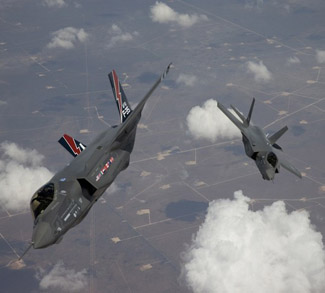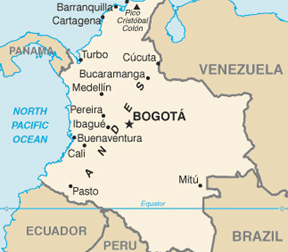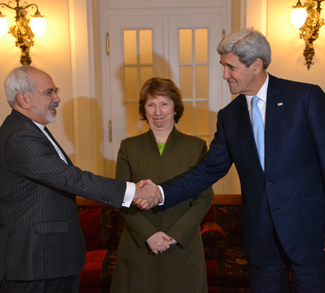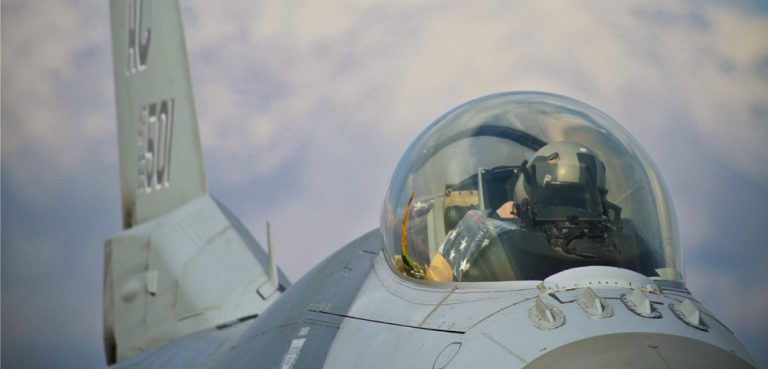Canada’s potential purchase of F-35 Joint Strike Fighters has sparked questions surrounding the appropriateness of military procurement plans and the legitimacy of government contract practices. But apart from these domestic controversies, there is the more important matter of how these new fighters would fit into Canada’s foreign policy.
Observers of the unfolding F-35 purchase plan sometimes have difficulty grasping why exactly the Canadian government needs expensive, modern, next-generation stealth fighters. After all, Canada is a famously peaceful country that rarely quarrels with other states. Additionally, most of Canada’s airspace is defended by the joint US-Canadian NORAD, leaving little need for increased domestic air presence. Without the urgent need to counter national threats, let alone the complete lack of any inter-state war on the horizon, it may seem as though Canada’s intended procurement of state-of-the-art planes serves little purpose.
However, certain pillars of Canadian foreign policy do require functional, flexible military capability. Though never a global superpower, Canada has often sought to establish itself as a “middle power” – a country of average global influence but with significant pull in certain policy areas. Fairly recently, for example, it was believed that Canada might be a major player in the global green energy initiative, but with the disintegration of the Kyoto Protocol and little other Canadian progress on this front, this notion has largely faded.
Other policy areas, however, remain ripe for Canadian leadership, and these areas would be well served by a modernized air force. Global humanitarianism has often been characterized as a strong Canadian value and it is one to which Canadians have contributed consistently over the years. From Lester B. Pearson’s conception of UN Peacekeeping during the Suez Crisis, to Lloyd Axworthy’s commitment to human security throughout the conflicts in Bosnia and Kosovo, to Michael Ignatieff’s considerable contribution to the UN’s “Responsibility to Protect” initiative, Canadians have long supported humanitarianism and sought to be its champions.
Regrettably, safeguarding the safety and dignity of all peoples often requires direct confrontation with abusers – putting “boots on the ground,” so to speak – and this necessitates a modern military. The NATO bombing campaign that forced Slobodan Milosevic to halt his ethnic cleansing of Serbia and Kosovo is a stark example of how air power in particular can be invaluable to humanitarian goals. The paradigms that stress the importance of this kind of intervention seem to have entrenched themselves in the policy of many Western governments. Thus, Canada will need the capability to rise to this challenge if it wishes to establish itself as an important player in the field of human security.
Canada also has other international commitments to consider. The Canada First Defence Strategy of 2008 pledges that Canada will act as a credible and reliable partner on the international stage, assisting allies in their conflicts. Treaty commitments, such as those surrounding NATO, require Canada to respond militarily to any attack on a member state. For Canada to fulfil these obligations and promote its foreign policy of being a reliable partner, a modern, viable, and responsive military force is necessary.
The current backbone of the Royal Canadian Air Force are CF-18 Hornets, which have been repaired and sustained long past their intended lifecycle. The planes are 30 years old and expensive to maintain. A handful of them have been lost over the years, and many more have not yet been upgraded to maintain functionality in modern warfare. To replace them, the Canadian government seems intent on purchasing 65 F-35 Lightning II planes, which are to be manufactured as part of the Joint Strike Fighter program with the United States; a program that Canada has been heavily involved in. While there is some uncertainty regarding the cost effectiveness of the F-35, the deteriorating CF-18s are too aged and too maintenance-intensive to be counted on. Without a reliable, front-line aircraft, Canada’s capacity to support its allies and defend victims of human rights abuses is at risk.
Though Canada faces no major looming threats and has no serious enemies, a responsive and reliable air force remains important to Canadian foreign policy. Canada must be able to initiate swift humanitarian interventions to maintain the mantle of middle power and promote universal human rights. Moreover, if Canada is to present itself as a stalwart companion to its allies, it must ensure its ability to fulfil treaty obligations that call for united responses to threats. The current state of the Royal Canadian Air Force is decay, and putting aside questions of cost-effectiveness and procurement practices, the F-35 Lightning II represents a modern, versatile craft capable of restoring Canada’s air force to the level at which it can support Canadian foreign policy objectives.




